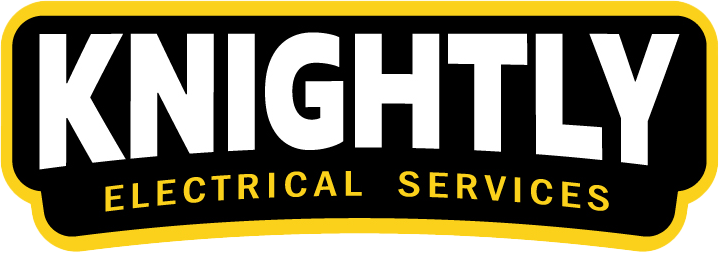Solving Two Wiring Problems in One Visit
- Knightly Electrical Services
- 2 days ago
- 4 min read

A lot of homeowners don’t realize that there are likely a few different types of wiring in their home. For example, most homes have both high- and low-voltage lines, which are used for different applications.
Some home service providers can only install, repair, or replace one kind of wiring, but Knightly Electrical Services can handle all of your home wiring needs.
In fact, we completed a recent service call that illustrates this perfectly.
Kitchen Outlets Not Working
About a week ago, a customer named Retha contacted us because the kitchen outlets in her Alpharetta home had stopped working. She’d reset the GFCIs, but that didn’t resolve the issue. So, we scheduled a service call to check things out.
This kind of issue is exceedingly common, and we deal with it all the time. It’s usually a quick fix, as it was in this case. But while there, Retha mentioned that she also needed help with her Wi-Fi service. She didn’t have a great internet connection in her home office, and her occupation requires a consistent and stable high-speed connection.
But rather than trying to use Wi-Fi to connect to the internet, Ryan recommended that we simply install an ethernet line from her router to her home office. This way, she could plug her computer (or a secondary Wi-Fi router) directly into a port in the wall. This would eliminate the connectivity problems she was having and provide the kind of service she needed.
She thought that was a great idea, so Ryan got to work. Most of the work took place in an “open stud” environment, meaning that he didn’t have to cut much drywall, so the entire job only took about 90 minutes.
With her kitchen outlets fixed and a new, reliable internet connection, Retha was happy, and we went on our way.
Water Hoses and Electric Lines: A Helpful Metaphor

We mentioned at the outset that we service both high- and low-voltage wiring. But before we explain more about that, it’s important to understand some basic electrical terminology — specifically the term “voltage.”
Often confused with current, voltage is essentially electrical pressure. The higher the voltage, the harder a circuit is “pushing” the electric current.
Water hoses or pipes provide a great analogy.
If you turn on a spigot, the water pressure pushes water through the hose. The amount of water pressure present is roughly equivalent to the concept of voltage, or the amount of electrical pressure in a circuit.
The actual flow of water through a hose is basically akin to the current flowing through a circuit, except that instead of electricity, the hose carries millions of water molecules. Another electrical term — resistance — also shows up in this analogy; it’s essentially the size of the hose. The larger the hose, the more water that can travel through it, which is similar to the way lower resistance wires allow electricity to pass through the circuit more easily.
And before circling back to high- and low-voltage wiring, let us point out that voltage, current, and resistance are all connected. If the voltage increases and resistance stays the same, the current will increase. If resistance goes down, current can also increase, even without more voltage.
High-Voltage Lines and Low-Voltage Lines

Circling back to Retha’s service call, she needed help with both high- and low-voltage circuits.
Her kitchen outlets — like most of the outlets in your home — are a high-voltage circuit (though they’re often called “line voltage” by electricians to distinguish them from the kind of high-voltage lines that are used to carry electricity via utility lines). They carry either 120 or 240 volts.
Meanwhile, the ethernet cable and port we installed are part of a low-voltage circuit. Ethernet lines usually only carry a few volts for data — and even with Power over Ethernet (PoE), they’re still under 50 volts, far less than a household outlet. There are a few other kinds of low-voltage lines in your home, such as your doorbell circuit.
The big difference is that a 120-voltage wire may electrocute you if you touch it, but a low-voltage wire is unlikely to harm you. That doesn’t mean amateurs should work on these kinds of circuits; you still need the proper skills, tools, and techniques to install them correctly. But they don’t represent the same kind of safety risk that high-voltage wires do.
Knightly Electrical Service: Your Full-Service Electricians

Whether you need help with a high-voltage circuit, low-voltage circuit, or any other electrical system in your home, our licensed electricians are ready to help!
You can contact us via phone (770-243-5706) or email us at scheduling@knightlyelectricalservices.com. Or if you prefer, you can simply schedule a knight right now!
We’ll send over a uniformed, background-checked, drug-and-tobacco-free knight to provide all of the electrical services you need.

